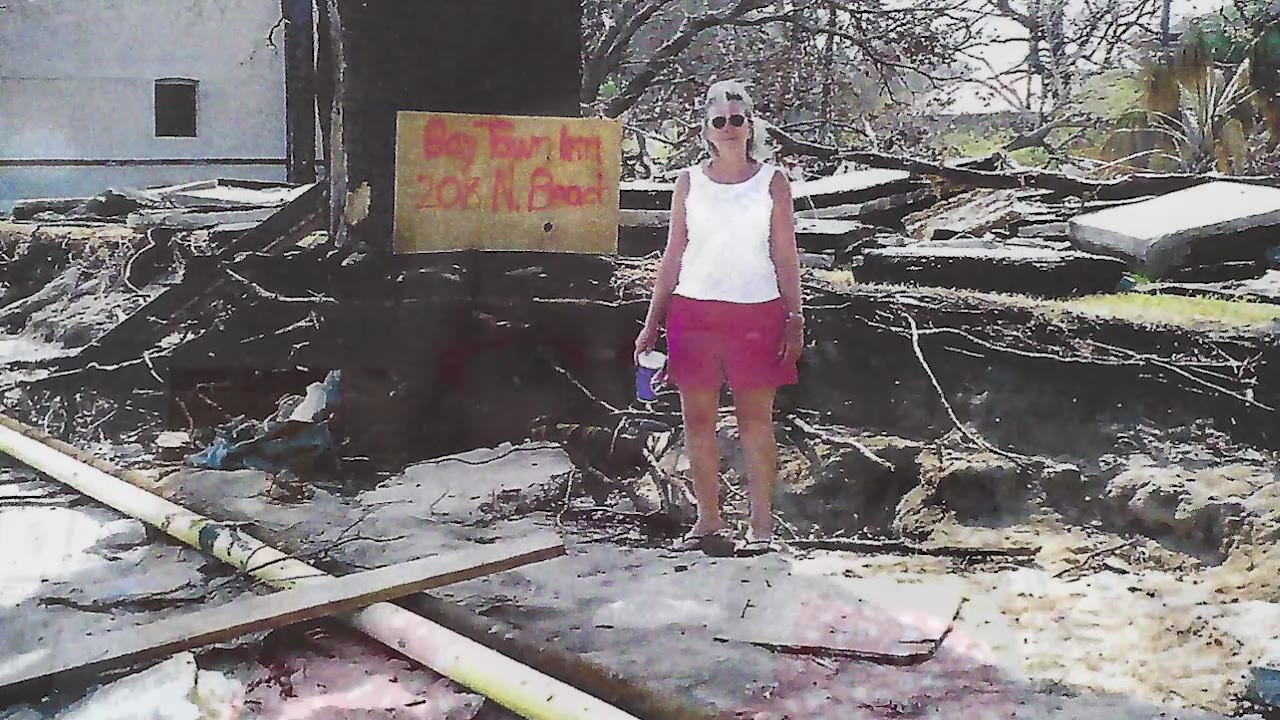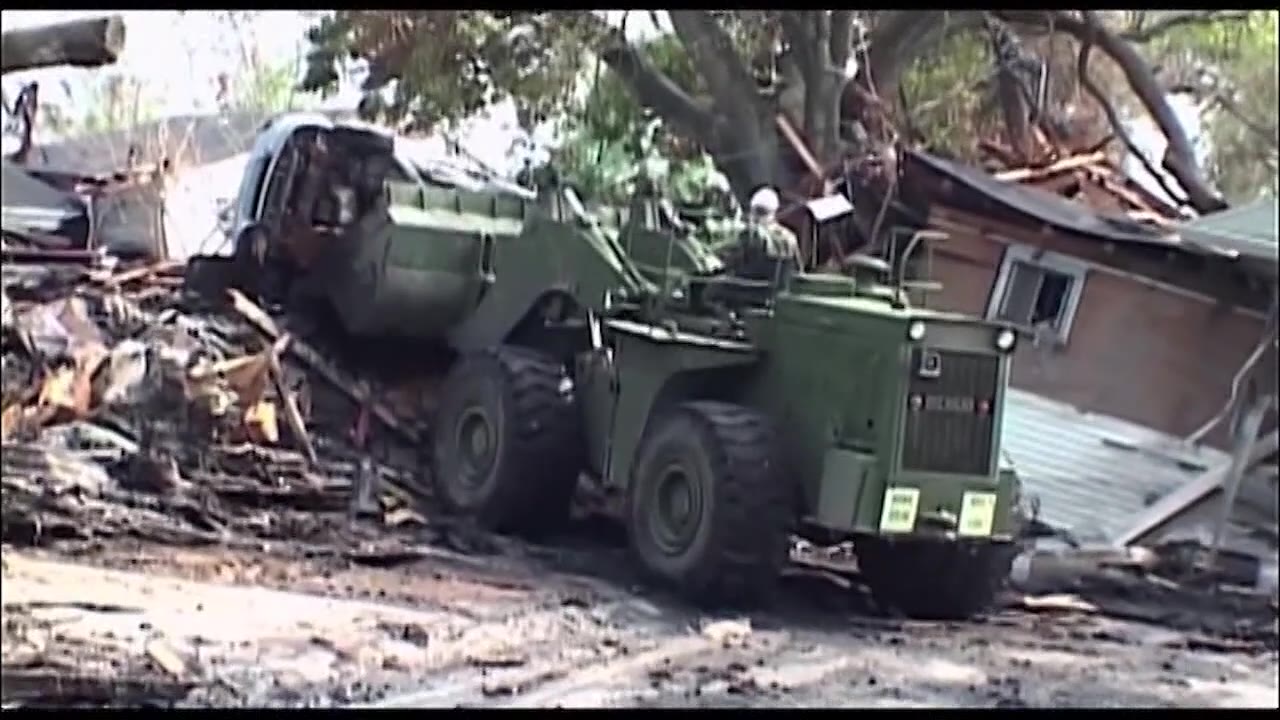Hurricane Katrina: A Devastating Natural Disaster
In 2005, Hurricane Katrina swamped the Gulf Coast, flooding vulnerable New Orleans and driving millions from their homes. Reporters and residents alike were stranded in the swamped city – all looking for help and answers that, in some cases, never came.
Friday marks the 20th anniversary of Hurricane Katrina, one of the worst natural disasters in the nation’s history. This harrowing event not only changed the lives of residents and the physical landscape of New Orleans, but it also brought national attention to race, income disparities, and the federal government’s preparedness and emergency response to the hurricane.
What Happened in Hurricane Katrina?
File: A military truck drives down a flooded Canal St. August 31, 2005 in New Orleans, Louisiana. (Photo by Mark Wilson/Getty Images)
On Aug. 29, 2005, Hurricane Katrina devastated New Orleans and the Gulf Coast when it made landfall as a Category 3 storm. New Orleans Mayor Ray Nagin issued a mandatory evacuation for residents to leave the area. Levee failures triggered widespread flooding, leaving 80% of New Orleans underwater and caused substantial damage to neighborhoods including the Lower Ninth Ward, Lakeview, and St. Bernard Parish.

File: Stranded victims of Hurricane Katrina walk toward buses to be evacuated from the city on a highway overpass near the Superdome September 3, 2005 in New Orleans. (Photo by Mario Tama/Getty Images)
More than a million residents evacuated the city, but thousands of others stayed in their communities seeking refuge in their homes, while another 15,000 residents traveled to the Superdome for shelter, where supplies and food were scarce.

File: People walk through high water in front of the Superdome August 30, 2005 in New Orleans, Louisiana. (Photo by Mark Wilson/Getty Images)
When the Superdome roof began to leak, the arena became uninhabitable, and residents evacuated the space and headed to the New Orleans Convention Center but found other residents displaced with no food or medical supplies.
As residents implored the local and federal government for help, looting transpired in the city and spurred unfounded news reports from some media outlets claiming lawlessness in the area while portraying evacuees as refugees and criminals stealing supplies from local businesses.

File: A woman is placed into an Army vehicle after being rescued from her home after being trapped in high water in Orleans parish in the aftermath of Hurricane Katrina August 30, 2005 in New Orleans, Louisiana. (Photo by Mario Tama/Getty Images)
Parts of New Orleans sat underwater for weeks before the federal government responded to the disaster. The Federal Emergency Response Agency (FEMA) faced criticism for its lack of preparedness for the disaster, its lack of coordination with government officials to mobilize the rescue of residents stranded in the area, and its delayed allocation of resources to them.
In total, Hurricane Katrina caused roughly 1,400 deaths and nearly $200 billion in damage.

File: Two men paddle in high water after Hurricane Katrina devastated the area, August 31, 2005 in New Orleans, Louisiana. (Photo by Mario Tama/Getty Images)
Hurricane Katrina 20 Years Later
In the aftermath of Katrina, more than $100 billion was distributed to New Orleans to restore the city and its infrastructure. WDSU-TV in New Orleans reported that some of the money was allocated to refurbish city schools and rebuild hospitals and thousands of homes destroyed by the hurricane.

Hurricane Katrina: Survivor stories
Nikki Moon was with her friends when Hurricane Katrina hit the inn she was staying at. Moon shares her story and reflects on the tragedy two decades later.
The federal government also spent $14.5 billion on levees, pumps, floodgates, and drainage that provide more protection from storm surges and flooding in New Orleans, the Associated Press reported.
Despite the widespread restoration in the city, some neighborhoods are thriving while others still await reconstruction like the Lower Ninth Ward. But this neighborhood is one of many with blighted homes, while many dilapidated buildings, including Six Flags and Charity Hospital are waiting to be repaired 20 years later.
New Orleans Population Drastically Changes After Katrina

File: A resident walks past a burning house fire in the 7th ward September 6, 2005 in New Orleans, Louisiana. (Photo by Mario Tama/Getty Images)
After Katrina, some evacuees decided to return to New Orleans, while others never moved back to the area, choosing new cities to start over.
According to a report by Data Commons, which references Census.gov statistics, New Orleans’ population was roughly 455,000 to 462,000 between 2004 and 2005, before Katrina slammed the city.

Hurricane Katrina: Rebuilding after the storm
As LiveNOW continues our coverage of Hurricane Katrina, we wanted to share the story of Michael Hecht, the president and CEO of Greater New Orleans. In the days and months following the storm, he helped small business owners get back on their feet, and says rebuilding those small businesses still continues to this day.
In the year after Katrina in 2006, Census.gov reported that New Orleans’ population dropped by more than half to 230,172. While it has not returned to its pre-Katrina level of 494,294, the city’s most recent population totaled 384,320 residents.
And in recent numbers published by the Data Center in March 2025, New Orleans’ population was estimated to have grown to 362,701 by 2024.
Conclusion
Hurricane Katrina was a devastating natural disaster that changed the lives of residents and the physical landscape of New Orleans. The storm brought national attention to issues of race, income disparities, and the federal government’s preparedness and emergency response. While the city has made significant progress in rebuilding and restoring its infrastructure, some neighborhoods still await reconstruction, and the population has drastically changed.
Frequently Asked Questions
Q: What was the category of Hurricane Katrina when it made landfall?
A: Hurricane Katrina made landfall as a Category 3 storm.
Q: How many people died as a result of Hurricane Katrina?
A: Roughly 1,400 people died as a result of Hurricane Katrina.
Q: How much damage did Hurricane Katrina cause?
A: Hurricane Katrina caused nearly $200 billion in damage.


